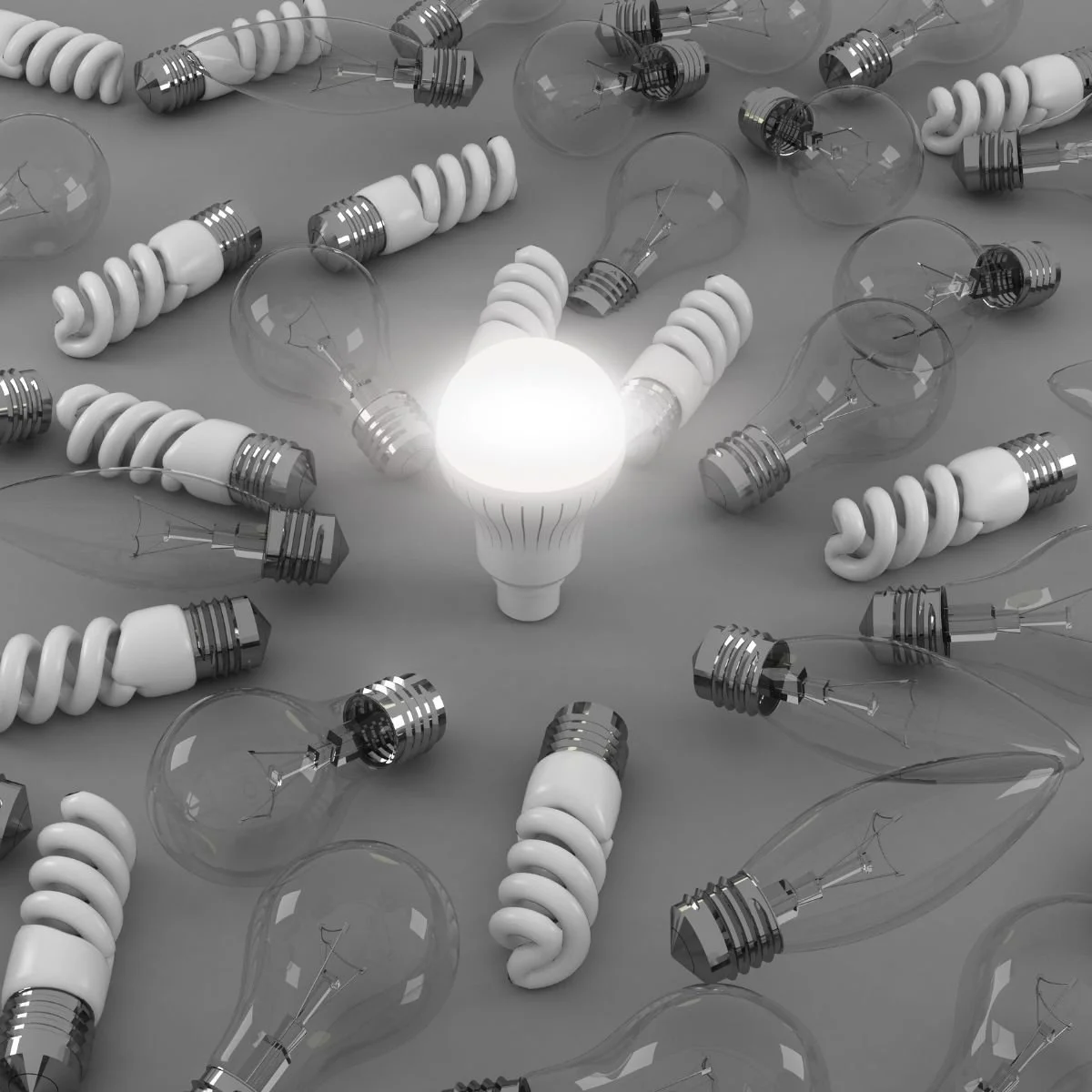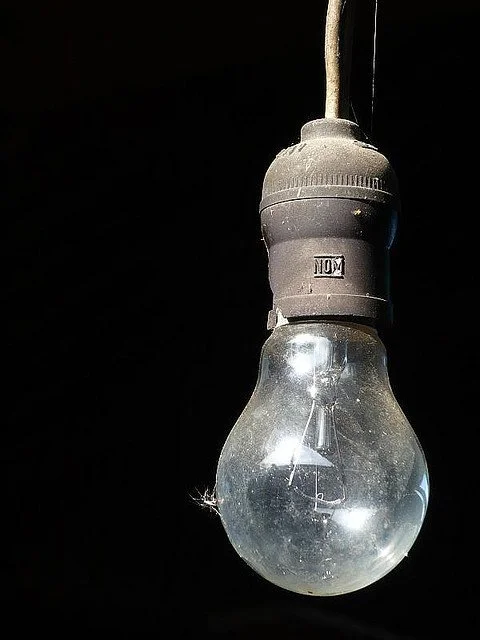LED…ready for prime time?
Accounting for approximately 20% of our national electrical usage, lighting is one of the most critical and difficult parts of a design. Because it directly engages our sense of sight, it can psychologically shift the way a space is perceived. Color rendition, temperature rendition, and brightness levels all play a part. Lighting designers manipulate us on a daily basis through their art urging us to eat, drink, relax, spend money- and yes, work harder!
Going the way of the dinosaur!
Most of us tend to like our home spaces to feel warm and inviting, but very few of us actually pay attention to the lighting. We’ve all grown accustomed to the ubiquitous center fixture augmented by lamp configuration prevalent in the housing industry. Recessed cans and dimming devices have made the transition from commercial to residential applications, but are most typically used in circulation areas or to highlight specific elements. As a result. many houses take on a cave like appearance after dark. As a residential designer, my preference is to use at least 3 levels of lighting in a space with differing levels of intensity and brightness depending on use and location. Because of this, color rendition and light level control are critical to the final result.
One of the broadest reaching environmental pieces of legislation in recent years was the passage of the 2012 Lighting Legislation. (For a good explanation, view the short video below!) One of its goals was to reduce the amount of energy needed to light our world. It is intended to achieve major reductions by essentially outlawing incandescent bulbs. This has left me looking around for a replacement for an industry standard. The most wide reaching aspect of this legislation is the phase-out of the standard 100, 75, 60 and 40-watt light bulbs between 2012 and 2014. I’ve been following several different online discussion groups regarding LED lighting. It is a lighting option I’ve been watching for a few years now. A trip to the lighting aisle of the nearest big box building supply retailer reveals the current race for predominance between the 3 leading competitors.- fluorescent, halogen, and LED (light emitting diode).
Originally used in retail and gallery settings, Halogen has long been a designers favorite to highlight art, jewelry and specialty detailing, it’s clean white light provides incredible color rendition and sparkle to a space even when dimmed. Unfortunately, the qualities that make it ideal for these jobs make it a harsh light to live under. The bulbs also burn very hot and require specific handling to ensure their longevity.
There are a number of compact fluorescent replacement bulb options out there. Unfortunately, they take time to warm up- no instant brightness when you flip the switch on. Even though color rendition and range are vastly improved over early models, there is still a significant visible color shift, particularly in the red range. While they use less energy and emit minimal amounts of heat when compared to traditional incandescent bulbs, they are manufactured with trace amounts of mercury, which makes environmentally correct disposal inconvenient. Dimmable options have recently entered the market, though I haven’t tried them yet. My tendency has been to use compact fluorescent bulbs in “on/off” applications where true color rendition doesn’t necessarily matter so much. I am currently using warm white reflector flood replacements in exterior recessed cans, the kids’ playroom and on the basement stairs. These lights are typically left on for long periods of time and true color rendition is not critical.
The new Philips LED 60-watt replacement bulb.
This brings us to LED, short for Light Emitting Diodes. LED has been the stealth player in the market. It has rapidly emerged by steadily evolving through various useful stages. The first application of LED bulbs that I really noticed was in traffic lights. Their long life, coupled with the fact that several diodes combine to provide adequate illumination, allowed the signal to function if one diode went out, which was a huge selling point to transportation departments around the country. Exit signs were another early adopter for the same reasons. Until recently, the only effective LED products on the market were specialty items. Display lighting was among these. The low amount of energy used and the longevity (25,000-50,000 hours) of the bulbs proved an extremely attractive combination for the retail market, especially when located in hard to reach high spaces or difficult to access display cases.
Recent developments in LED technology include an increased color range, dimming capacity and a wider range of bulbs that work in existing fixtures. One of the major stumbling blocks has been getting the light output of the bulbs to an acceptable level at an acceptable cost! Philips has come out with a good 60-watt bulb replacement that is dimmable and energy star rated. For a demonstration of how these bulbs are put together, click this link.
Bulb prices have decreased a significant percentage in the past year and it is anticipated that their cost will decrease further. Right now they are a good option for use in fixtures where replacement is difficult and expensive. There are replacement bulbs available for a wide variety of applications, including MR-16 halogens. Personally, I plan on phasing them in as replacements are needed, knowing that the product will only improve and pricing will decrease! Ready for prime time? Almost!



